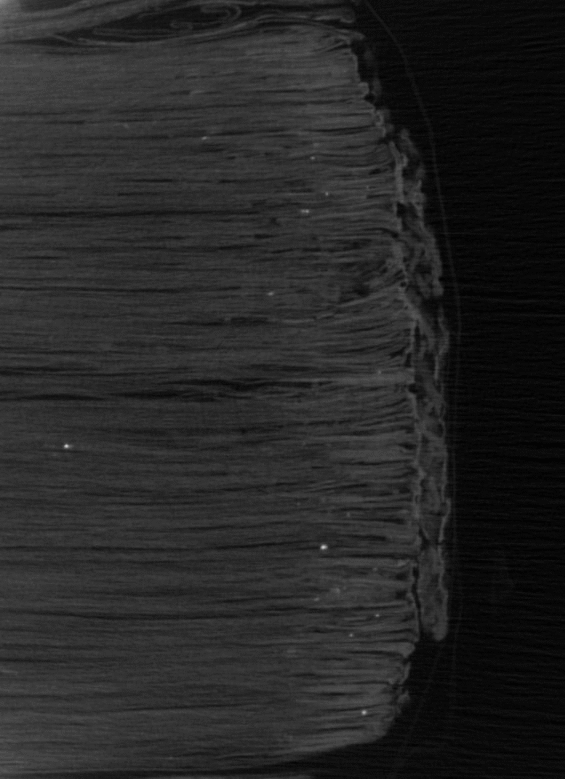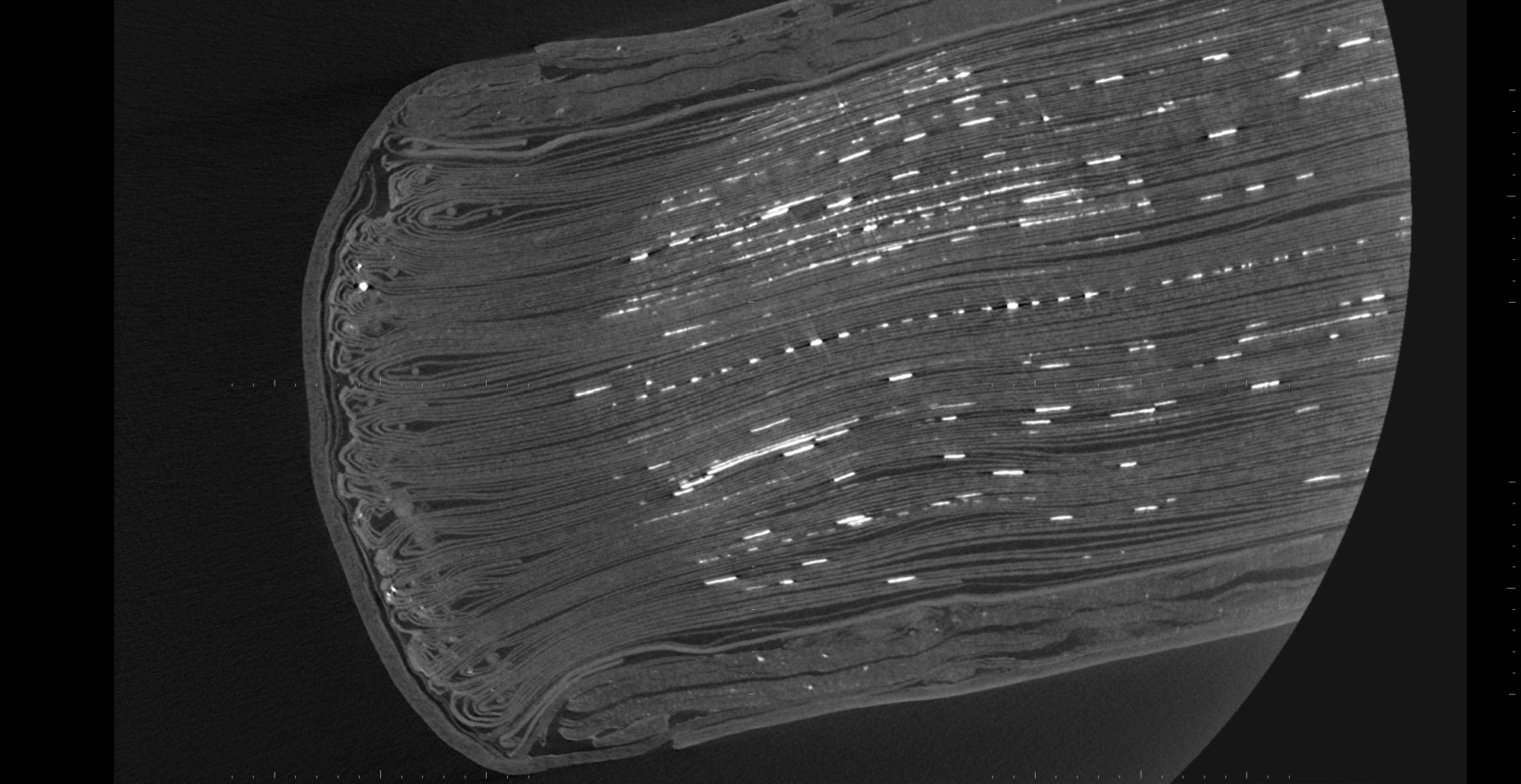
Micro-CT–– micro computed tomography––creates a three-dimensional representation of an object’s interior by projecting a narrow beam of x-ray through the object to a high-resolution detector behind. The three-dimensional effect is created by rotating either the object, or the x-ray source and detector; the CT gathers and compiles many narrow data slices, giving a researcher many possible ways of looking through the object.
Using micro-CT, scholars and scientists have been able to look inside the structures of fragile ancient scrolls and books. Results have made headlines recently––e.g. Brent Seales’ 2016 work with the En-Gedi scroll, and his and Paul Dilley’s micro-CT of a Coptic Egyptian biblical text from the Morgan library. Seales's team are now using a synchrotron to read the Herculaneum scrolls recovered from the Vesuvius eruption of 79 CE.
Our team uses micro-CT for another purpose: to see the inner structures of book bindings––to observe adhesives, sewing stations, supports, and other features––and to gather quantitative data that can be used in material analysis.
With Andrew Nelson and Debbie Meert-Williston of Western University, we have used micro-CT to uncover "ghost bindings"––empty sewing stations and impressions left by medieval binders on books that have been rebound in the modern era. With Giovanni Grasselli's Geomechanics Group, we are exploring the use of local density contrasts to characterize and identify medieval manuscript materials.
